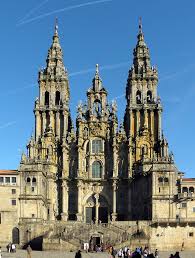Introduction
Santiago de Compostela, the capital of the Galicia region in northwest Spain, is renowned for its historical and spiritual significance as the final destination of the Camino de Santiago pilgrimage. For centuries, it has attracted millions of pilgrims and tourists alike, drawn by the city’s rich heritage, stunning architecture, and deep-rooted traditions. This article delves into why Santiago de Compostela remains a pivotal centre for spiritual journeys and cultural exploration.
The Historical Significance
Santiago de Compostela is famously associated with the burial site of Saint James, one of Jesus Christ’s twelve apostles. According to tradition, the remains of Saint James were discovered in the 9th century, leading to the establishment of this pilgrimage route, known as the Camino de Santiago. Throughout the Middle Ages, the city flourished as a religious and cultural hub, solidifying its status as a pilgrimage site within Christianity. The UNESCO World Heritage designation in 1985 recognized the city’s rich architectural heritage, including the impressive cathedral, which served as the focal point for pilgrims arriving from various routes across Europe.
Modern-Day Pilgrimage
Today, the Camino de Santiago continues to attract not only those on spiritual quests but also adventure seekers and cultural enthusiasts. The Camino comprises numerous routes; each showcasing the beautiful landscapes of Spain, from the rugged mountains of the Pyrenees to the lush vineyards of the Rioja. The bustling streets of Santiago de Compostela are filled with cafés, souvenir shops, and local markets that reflect the city’s unique Galician culture. Pilgrims typically arrive at the Cathedral of Santiago to receive their Compostela, a certificate of completion for the pilgrimage.
Cultural Heritage and Tourism
Santiago de Compostela is not solely about pilgrimage; it is a city steeped in cultural activities and gastronomic delights. The city is home to numerous festivals, including the famous Feast of Saint James, celebrated on July 25th, drawing thousands to partake in various spiritual and musical events. The local cuisine offers a rich tapestry of flavours, with dishes highlighting regional specialties like octopus, empanadas, and the famous Albariño wine. Furthermore, various museums, such as the Museum of Galician People and the Cathedral Museum, provide in-depth insights into the region’s history and culture.
Conclusion
As a UNESCO World Heritage site and a spiritual epicentre, Santiago de Compostela continues to hold tremendous cultural and historical importance. Its appeal as a pilgrimage destination showcases the enduring connection between faith and travel, and as global interest in spirituality and heritage tourism grows, Santiago is poised to remain a vital destination for years to come. Whether one is seeking spiritual fulfilment or a cultural experience, Santiago de Compostela offers a unique blend of history, tradition, and beauty that resonates with all who visit.
